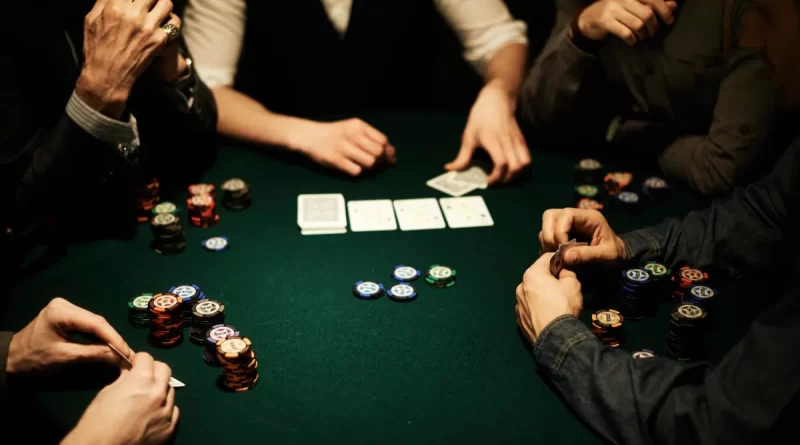How to Spot Poker Tells in High-Stakes Games
Though physical tells are fewer and farther between online, betting patterns might still be worth monitoring – even just a little bit – through lazy deliberate practice. The patterns you notice might save you money down the line.
You could tell when someone was nervous because they were holding a very good hand. Similarly, someone smiling knowingly in their low hand could have a monster.
Eye contact
Eye contact (ie looking) is one of the key elements of body language. Eye contact signals attention, or lack of confidence, or attraction; gazing also signals confidence and certain types of bluff. Microexpressions are also part of body language: a momentary involuntary facial expression that belies suppressed emotions such as excitement or nervousness. A big pupil may be a sign of excitement; avoiding eye contact might signify nervousness or weakness. Watch for repetitive acts or gestures – tapping of the fingers or wringing of the hands, for instance – that might identify signs of weakness in one hand, or strength in the other. This might be a giveaway.
Leaning in
The set of the player’s body, and his behaviour over the course of the hand, in fact give away confidence and strength of hand – by leaning forward when he thinks he’s going strong; by dropping into a slump through nerves and weakness in the middle of a hand. These tells aren’t perfect, and often don’t hold true from one hand to the next, so try to draw conclusions about a tell through patterns across multiple hands, rather than grabbing on to a piece of behaviour after one hand. This is where players can do their part to decrease their own poker tells by maintaining a systematic routine for sitting down, checking their cards, stacking chips or staking a bet. Working with an honest and professional poker coach to identify a player’s gives and receives, and devising a strategy to cover the gives is also helpful.
Crossed arms
A technique that is particularly useful is to observe an opponent’s body language as you play poker: if his right leg is shaking nervously, this might well indicate a shakey confidence in his cards. In contrast, an arm across the chest – an ‘I’m not telling’ gesture – may be an attempt to deceive by concealing weak cards. This activity can be conducted at RAM Game Room’s LED Oval Poker Tables. Arms akimbo might be defensive or closed, but the way its context and cultural (socioeconomic, national) context is weighted is more critical than the gesture itself. A cross-armed position is ‘defensive’ only in contrast to being open or closed – or aggressive or friendly – so if a reader does find it defensive, it should be only in light of other gestures, like eye-avoidance or picking at the chips.
Avoiding eye contact
Poker tells don’t come hard or fast. Some skin-signals you pick up on instinctively and preconsciously; you can’t train yourself to become aware of a player’s normal table habits as easily as having him draw a sidelong glance from you that will sensitise you to detecting his particular tells, right away. Like the involuntary straightening of his body when he’s grinning — something he so habitually does that others notice it instinctively, his body revealing what his face hides, which means (when bluffing) that he’s lying. If your opponent has made a bet or raise and then glances back at the pot or board, he is likely holding a big hand. Another type of physical tell occurs when a player is attempting to disguise a big hand by feigning weakness. These might include looking down at the floor, moving around in the seat, or just surreptitiously flinging a handful of chips on to the table in a chaotic burst.
Leaning back
If a player leans back in his chair or breaks posture by sliding a little to his left, right or back a good deal of time, it might indicate that the player has a poor hand, particularly if he does not look at his hole-cards or make eye contact with other players. Each player’s tells will be different, but look for repeated patterns: nervous tics, say, where the players stacks his or her chips, might reveal a strong hand, as can the time the player takes to make her decision.
Sitting upright
Players known for sitting bolt upright tend to have strong hands. Players who appear to slouch might have weak hands, or sitting upright might mean good hands, while for the stressed player, a forced smile could reveal strong hands. Trembling hands are also well-founded cues, because they are involuntary and players cannot control them. On the other hand, players can fake people with bluffs, using body language to throw people off the scent and feigning aggression or stand-offish stances when they have poor hands or start counting their chips when they have big hands. Discerning poker tells takes time and effort; even picking up one or two per opponent around the table will raise your chances.
Reaching for chips
Furthermore, when the stakes are high, adrenaline surges through players’ bodies. How that manifests for each person varies; someone who dials into their fight-or-flight-or-freeze can experience pupil dilation or jitters, but it’s often faster breathing patterns and breath rate that dominate. Reaching for chips should result in them betting – perhaps a lot – to induce their opponent to beat them back and give it right back to them in chips. Your expert friend is unlikely to share that tell with you, but Mike Caro did in his seminal 1970’s book Caro’s Book of Tells. It takes patience and practice to get good at reading tells in poker, but even one hint can give you the leg up you need at the poker table.

